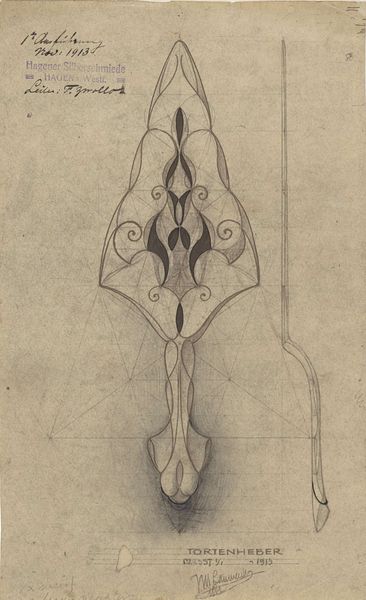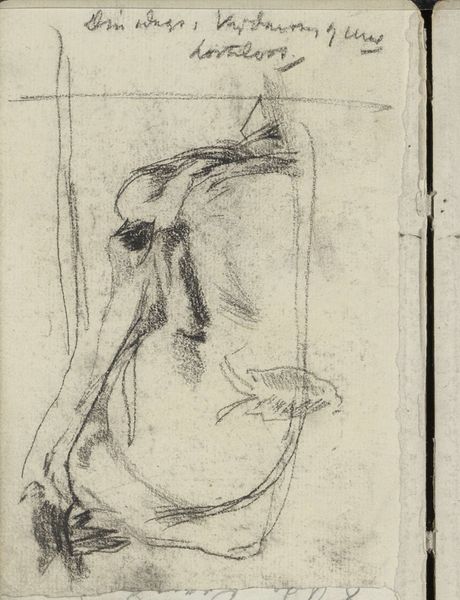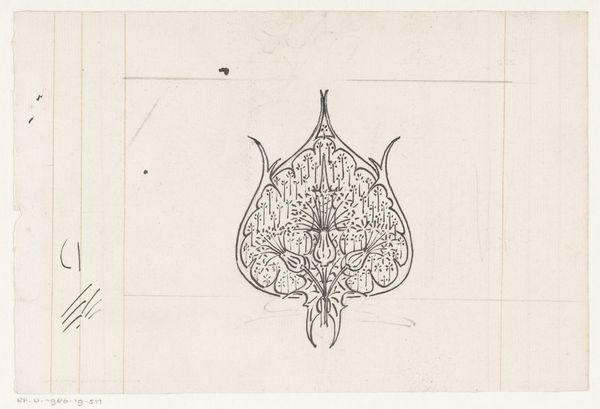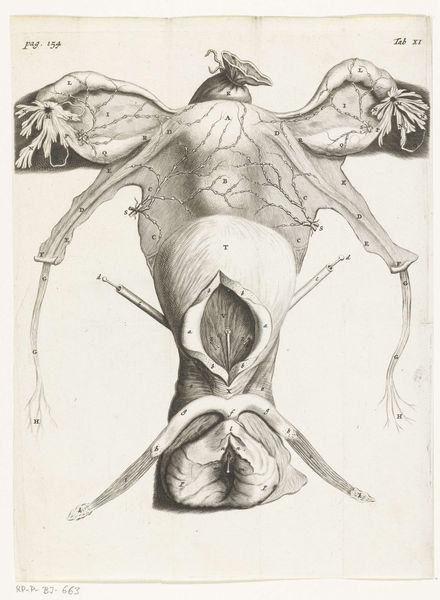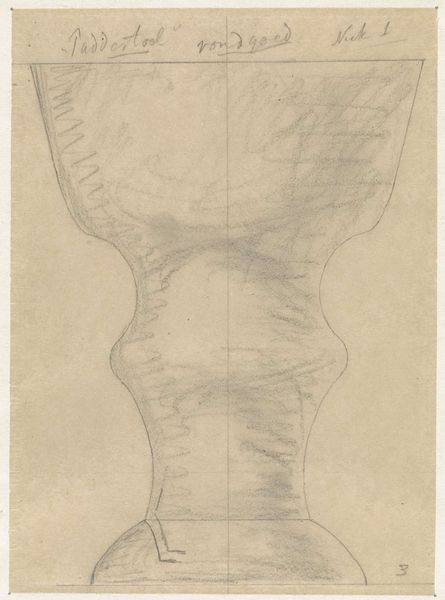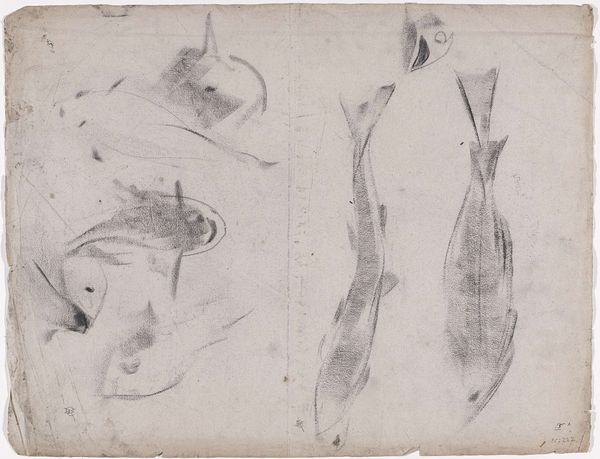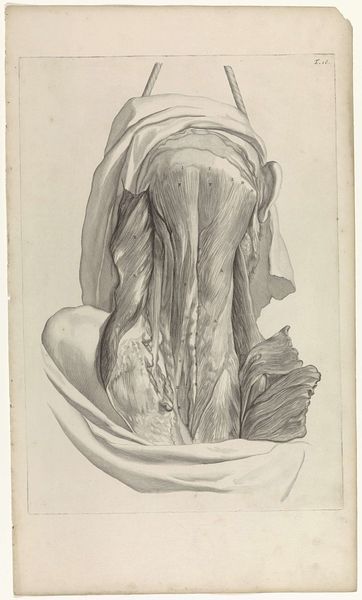
drawing, paper, pencil
#
drawing
#
art-nouveau
#
pencil sketch
#
paper
#
form
#
geometric
#
pencil
#
line
Dimensions: height 346 mm, width 169 mm
Copyright: Rijks Museum: Open Domain
Editor: This drawing, “Ontwerp voor een taartschep,” or Design for a Cake Server, by Mathieu Lauweriks, dates to between 1913 and 1916. It's a pencil drawing on paper, very delicate and geometric. The shapes remind me of Art Nouveau, but somehow more precise. How do you interpret this work? Curator: It’s fascinating how Lauweriks merges the organic and the geometric, isn’t it? Art Nouveau often signaled a break from industrial design. But here, we see an embrace of geometrical forms which arguably foreshadows later modernist movements that engage more explicitly with industrial production and mass culture. This blend really pushes us to think about the evolving role of craft and design within early 20th-century society. What do you think the intended function of the server says about that society? Editor: I guess the presence of such an ornate, meticulously designed cake server says something about middle-class aspirations to higher standards of living. Something everyone could afford? Was this meant to be mass produced or crafted by hand? Curator: Exactly. It is likely to have been aimed at an emerging middle class who had some, but perhaps not endless disposable income. These designs could be adopted to differing means of production - which allows for design and intention to both express and negotiate a place for art in modern society. If Lauweriks designed the cake server, it makes the division between form and function porous in a world becoming accustomed to functional design dominating the domestic and consumer landscape. Editor: So it's not just about aesthetics, but about accessibility and how art becomes part of everyday life and social identity? Curator: Precisely. It speaks to how design could democratize aesthetics or signal social aspiration. Editor: That gives me a lot to consider; how art and design can reflect or even shape cultural values. Curator: Indeed! And looking closely reminds us how seemingly simple designs carry layers of social and historical context.
Comments
No comments
Be the first to comment and join the conversation on the ultimate creative platform.
